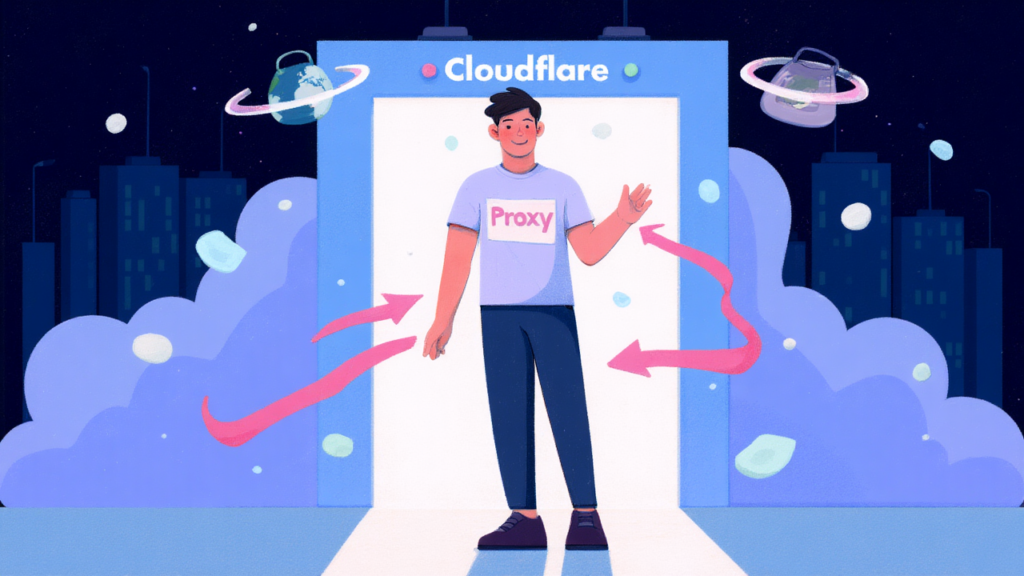Effective Strategies for Bypassing Cloudflare in 2025

Bypassing Cloudflare is a topic that draws increasing attention as more websites rely on Cloudflare’s robust protection to safeguard content and services. While this infrastructure enhances security, it can sometimes restrict legitimate use cases such as automation, scraping for academic research, or troubleshooting backend API calls. In this guide, we will walk through what Cloudflare does, why some developers seek to bypass it, and the most effective strategies used in 2025 that remain within legal and ethical boundaries.
Readers can expect a breakdown of technical methods, a look at how proxies play a role, practical considerations for browser and non-browser environments, and an exploration of key tools. If you’re a developer, data analyst, or researcher looking to better understand how traffic can navigate around Cloudflare challenges, this article is for you.
Understanding the Role of Cloudflare
Cloudflare acts as a content delivery network and a security layer for millions of websites worldwide. It filters traffic, prevents malicious bots, and serves cached versions of content to improve performance. This means that when a user or bot attempts to access a protected site, they often encounter a Cloudflare challenge that checks browser headers, IP trust levels, and even behavior patterns.
There are multiple Cloudflare protection layers, such as JavaScript challenges, CAPTCHA verification, and behavioral analysis through services like Bot Management and Turnstile. Knowing which layer you’re dealing with is essential when exploring options for bypassing Cloudflare.
Legal and Ethical Boundaries in Bypassing Cloudflare
Before diving into strategies, it’s critical to state that any attempt to bypass Cloudflare protections should align with ethical and legal standards. The techniques outlined here are designed for researchers, developers, and system engineers who are operating within acceptable use policies. Activities such as malicious hacking or unauthorized scraping can carry legal consequences and are not condoned.
Browser-Based Techniques for Bypassing Cloudflare
For users dealing with Cloudflare protection in a browser context, the goal is to mimic real user behavior. This is where browser automation tools and human-like traffic simulation become effective.
- Headless Browsers: Tools like Puppeteer and Playwright allow automation of full browser sessions, helping to solve JavaScript-based challenges.
- Real Browser Headers: Matching headers such as User-Agent, Accept, and Accept-Language improves the chance of passing Cloudflare inspection.
- Solving Turnstile CAPTCHA: Use services like 2Captcha or Anti-Captcha that provide APIs for solving CAPTCHA through human workers.
- Time Delays and Mouse Movements: Incorporating these adds realism to your traffic flow, improving the success rate of bypassing Cloudflare protections.
Non-Browser Methods of Bypassing Cloudflare
When operating outside of a browser, for example through `curl`, `axios`, or `fetch`, the challenge increases. Cloudflare inspects traffic patterns and blocks requests that look unnatural.
- Using TLS Fingerprints: Libraries like `tls-client` help match the TLS handshake patterns of real browsers.
- Cookie Injection: Harvest valid session cookies from a browser and inject them into non-browser requests. This requires regular refresh to avoid expiration.
- Cloudflare Workers Response Parsing: Advanced users analyze Cloudflare edge responses to detect challenge state and react accordingly.
Bypassing Cloudflare with Proxies

Proxies are perhaps the most popular tool used in bypassing Cloudflare effectively. They help simulate requests from various locations and IP types, which can dramatically improve success rates.
- Residential Proxies: These appear as real user devices and are the most effective against Cloudflare. They rotate IP addresses and make fingerprinting harder.
- Rotating Proxies: Useful for high-volume scraping, rotating proxies change IP per request or session, reducing detection risks.
- Proxy Headers Management: Ensure headers match the IP geolocation to avoid mismatch and trigger challenges.
Tools Commonly Used for Bypassing Cloudflare
There are tools and libraries maintained by open source contributors that help developers streamline their efforts in bypassing Cloudflare for legitimate use cases.
- Cloudscraper: A Python-based solution that uses requests and JavaScript emulation to navigate challenges.
- Undetected ChromeDriver: Modifies ChromeDriver to avoid detection, suitable for automation projects using Selenium.
- FlareSolverr: A popular open-source proxy server that uses Puppeteer and Chrome to handle challenges.
Challenges When Bypassing Cloudflare
Even with the right tools, bypassing Cloudflare is not foolproof. The protection system evolves rapidly and employs multiple signals for challenge decisions.
- IP Reputation: Even residential proxies may be blocked if overused or flagged.
- Cookie Expiration: Cloudflare cookies have a time limit or session scope, requiring frequent refresh.
- CAPTCHA Difficulty: Some Turnstile challenges require hard image recognition or checkbox puzzles.
- Rate Limits: Frequent access from similar sessions or scripts can result in temporary bans.
Common Use Cases for Bypassing Cloudflare
Not all attempts to bypass Cloudflare are malicious. Some are required for legitimate purposes like:
- Academic data collection from publicly available pages
- System monitoring and uptime verification
- Automated testing of public APIs
- Localization validation and region-specific content inspection
Comparing Key Approaches to Bypassing Cloudflare
- Browser Automation vs API Requests: Browser automation offers higher success but is slower and heavier. API requests are faster but more likely to fail unless headers and TLS are carefully handled.
- Residential vs Datacenter Proxies: Residential proxies are harder to detect and bypass rate limits, but more expensive. Datacenter proxies offer speed and affordability but often get flagged faster.
- Manual Cookie Injection vs Auto-Solver Tools: Cookie injection offers stability if done right, while auto-solvers reduce manual work but introduce extra latency and API costs.
- Real Browser Emulation vs Static Headers: Emulating real browsers using Playwright or Puppeteer is significantly more effective than relying on crafted static headers alone.
- Single IP Sessions vs IP Rotation: Maintaining a single IP session is useful for consistency, while IP rotation is better suited for wide-scale data retrieval across regions.
Why Residential Proxies Matter in Bypassing Cloudflare
Residential proxies are one of the most reliable tools for bypassing Cloudflare thanks to their use of real IPs that mimic everyday users. Cloudflare finds it harder to block these because the IP addresses belong to real ISPs and appear naturally distributed. When paired with proper browser automation and header management, residential proxies significantly reduce the failure rate of protected site requests. Providers like ProxyTee offer unlimited residential proxy solutions that support this kind of work seamlessly.
Final Thoughts on Mastering Cloudflare Bypass
Bypassing Cloudflare in 2025 is both a science and an art. With protections becoming more intelligent, success depends on staying up to date with real browser behaviors, using quality residential proxies, and respecting legal boundaries. Whether you’re running automated tests, retrieving public data, or simulating localized browsing, the techniques discussed in this guide will help you navigate Cloudflare’s layers without disruption. As the web continues to evolve, so too will the tools and methods used to access it efficiently and responsibly.


